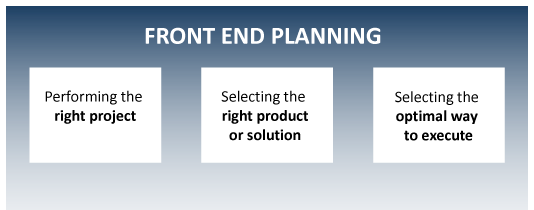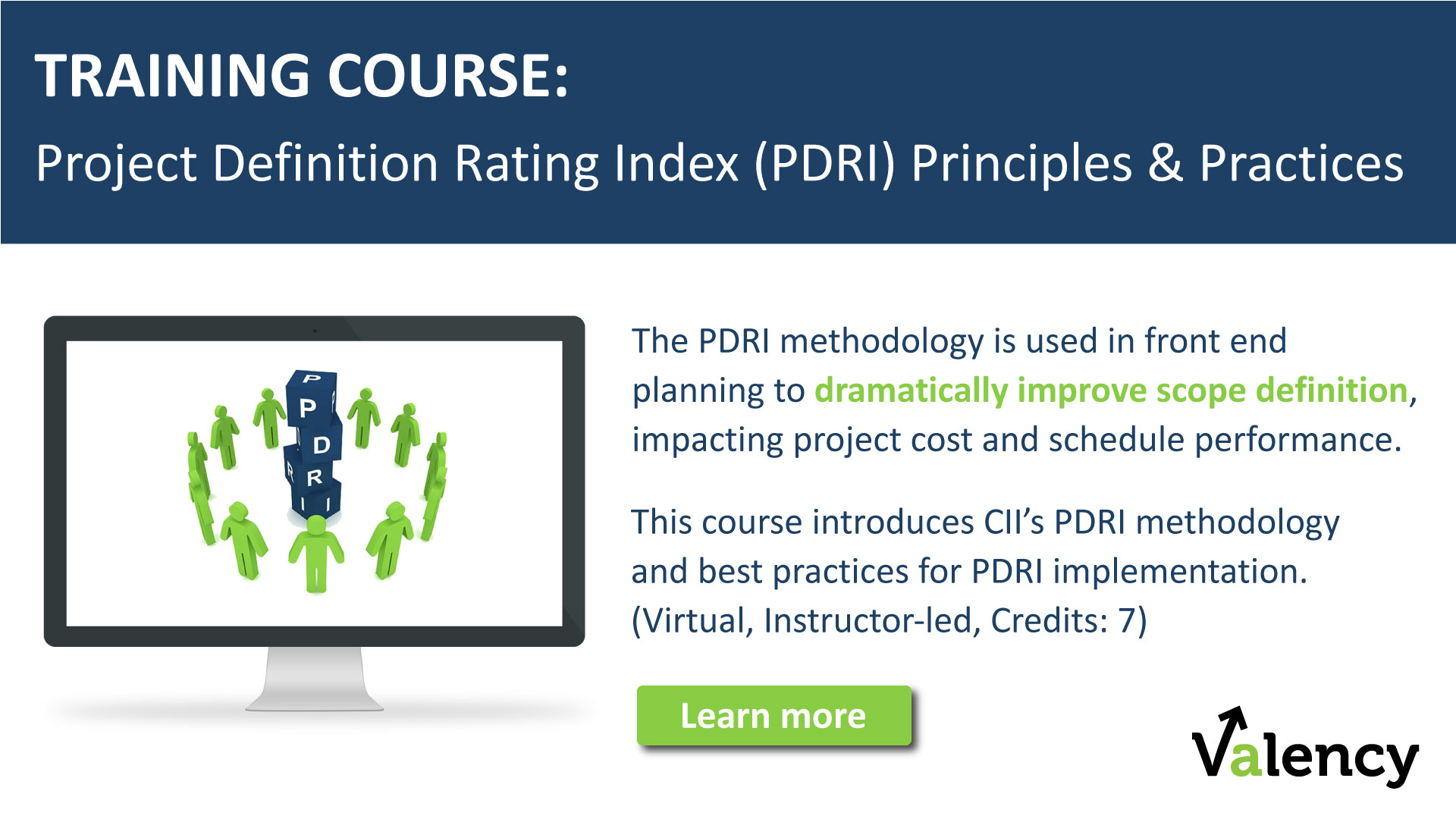In capital projects, what do you think is the leading cause of cost and schedule overruns?
Industry experts around the world all agree that poor scope definition in a project is the leading cause of cost and schedule uncertainty.
In fact, the Construction Industry Institute (CII) has studied the impact of scope definition on capital projects and identified a measurable influence on both cost and schedule.
In capital projects, scope is defined in the Front End Planning phase of the project lifecycle.
What is Front End Planning?
Front End Planning (FEP), also known as Front End Loading (FEL), pre-project planning and, project development (to name a few), remains the single most important process in the capital project lifecycle.
Simply put, front end planning involves developing scope to ensure you are:
- performing the right project
- selecting the right product or solution
- and selecting the optimal way to execute

One of the main benefits of a well-defined front end planning process is to identify any projects that don’t meet your strategic objectives and cancel them as early as possible.
However, projects that proceed beyond the early gate reviews need sufficient funding to ensure a well-defined scope is achieved.
Why Invest in Front End Planning?
The Construction Industry Institute’s research states that projects that invest 2-5% of the total install cost during FEP perform statistically better including:
- $3 – $10 payback on every dollar spent on FEP
- Up to 25% cost savings
- Up to 30% schedule reduction [1]
Without a doubt, it’s a careful balancing act to ensure that you don’t overspend on front end planning but, the research clearly illustrates the investment of time and effort will help improve cost and schedule certainty.
References:
1. Adding Value through Front End Planning, Construction Industry Institute (CII), 2012 https://www.construction-institute.org/topics/rt-268/pubs/sp268-3

